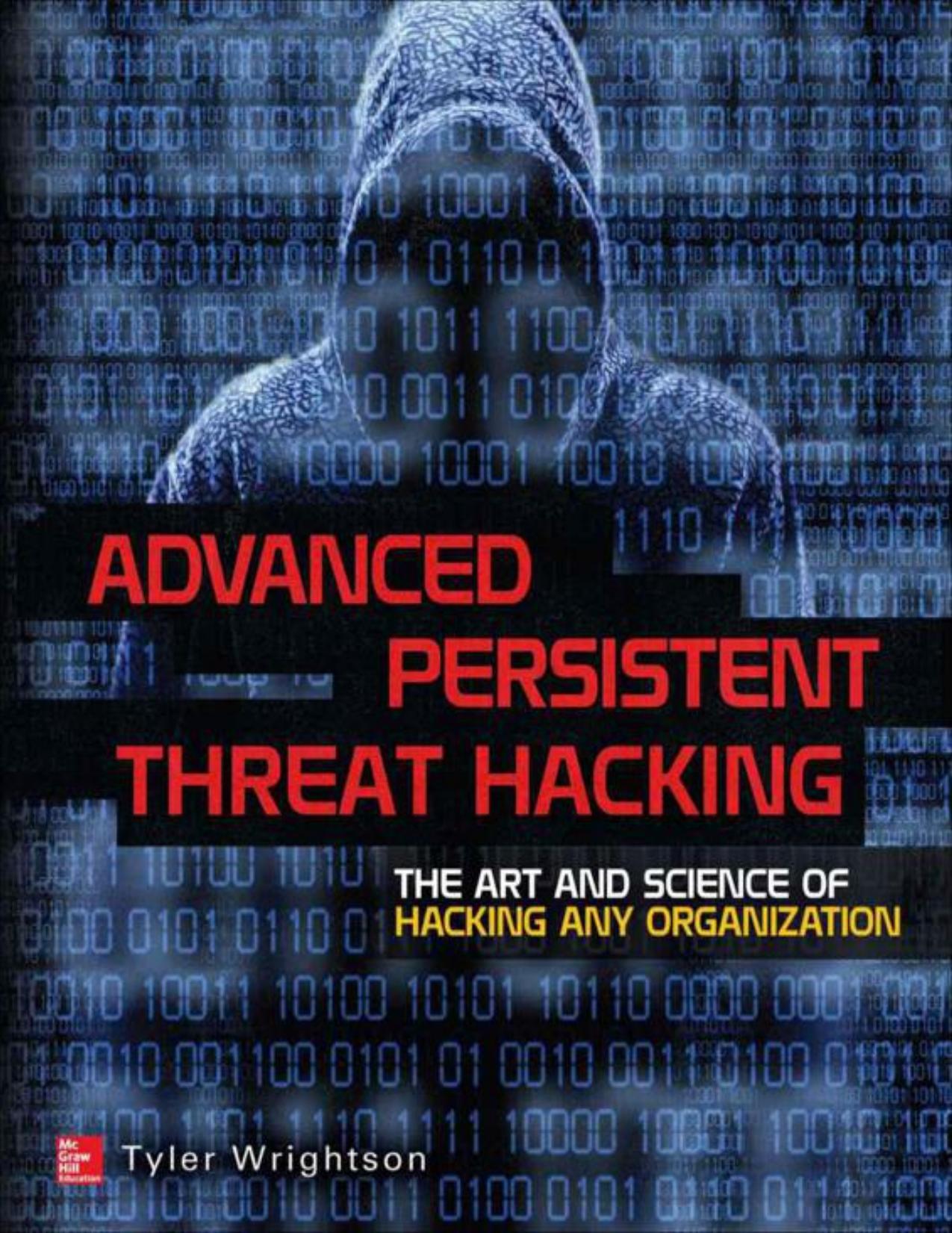Advanced Persistent Threat Hacking: The Art and Science of Hacking Any Organization by Tyler Wrightson

Author:Tyler Wrightson [Wrightson, Tyler]
Language: eng
Format: epub, azw3, mobi, pdf
Publisher: McGraw-Hill Education
Published: 2014-12-15T08:00:00+00:00
Active Wireless Recon
Before we know which wireless attack will be the most lucrative, we need to identify if there are any access points to target. We will perform active wireless reconnaissance in two steps, which may occur on the same day. The first step is to focus on identifying wireless access points and networks. In the second step, we’ll follow up and investigate specific networks of interest and seek to identify wireless clients.
In the first step, while discovering wireless networks, we want to be as quick but as thorough as possible. Even on a single campus or building, it can take a decent amount of time to be sure we’ve identified at least all of the BSSIDs available. In the first phase, it’s perfectly fine to not obtain the network name for a cloaked wireless network. The second phase is to specifically target areas of interest and to identify specifics related to the wireless network and its wireless clients. Keep in mind that just because we might not find any active wireless networks at our target organization (which is extremely unlikely but still possible), we might still be able to find and exploit wireless vulnerabilities, specifically within wireless-enabled client devices such as laptops or phones. For example, it’s not uncommon for an employee to have a laptop they bring home. Even though this laptop may or may not be connected to a wireless network at the employee’s home, if the wireless network card is enabled, it will most likely be constantly broadcasting its presence. This is an extremely important fact to understand, so I’ll repeat it! Even when there is no wireless network at a facility, a wireless client may still be vulnerable. In fact, most of the time, these types of wireless client devices will be more valuable for us to compromise than a wireless network.
Before we get started, let’s review the technical ways of identifying wireless networks. There are two basic ways to do this: through capturing beacon frames and through probe request/response. A probe request is a special frame sent from a wireless station to identify either a particular wireless network or all wireless networks—essentially, it’s a broadcast that attempts to identify any wireless networks. A wireless client or access point can then respond with a probe response that includes the network name, capabilities, and supported data rates of the responding device. Since probe requests require our stations to send packets, which can be recorded and alerted on, we will typically avoid the use of them. In fact, it’s a common signature within wireless monitoring systems to log and alert client devices that probe for wireless networks but never join a wireless network. Following is an example of a Kismet message indicating just that:
ALERT Thu Feb 27 10:37:10 2014 Suspicious client 00:21:6a:34:05:c7 - probing networks but never participating.
Beacon frames are sent by access points to periodically announce the existence and capabilities of the wireless network, such as network name (SSID), data rates, timing, etc. Beacon frames are
Download
Advanced Persistent Threat Hacking: The Art and Science of Hacking Any Organization by Tyler Wrightson.azw3
Advanced Persistent Threat Hacking: The Art and Science of Hacking Any Organization by Tyler Wrightson.mobi
Advanced Persistent Threat Hacking: The Art and Science of Hacking Any Organization by Tyler Wrightson.pdf
This site does not store any files on its server. We only index and link to content provided by other sites. Please contact the content providers to delete copyright contents if any and email us, we'll remove relevant links or contents immediately.
| Blogging & Blogs | eBay |
| E-Commerce | Hacking |
| Online Searching | Podcasts & Webcasts |
| Search Engine Optimization | Social Media |
| Social Media for Business | Web Browsers |
| Web Marketing |
Grails in Action by Glen Smith Peter Ledbrook(9163)
Sass and Compass in Action by Wynn Netherland Nathan Weizenbaum Chris Eppstein Brandon Mathis(8808)
Secrets of the JavaScript Ninja by John Resig Bear Bibeault(8594)
Kotlin in Action by Dmitry Jemerov(7263)
WordPress Plugin Development Cookbook by Yannick Lefebvre(4338)
Mastering Azure Security by Mustafa Toroman and Tom Janetscheck(3471)
Learning React: Functional Web Development with React and Redux by Banks Alex & Porcello Eve(3139)
A Blueprint for Production-Ready Web Applications: Leverage industry best practices to create complete web apps with Python, TypeScript, and AWS by Dr. Philip Jones(3030)
Mastering Bitcoin: Programming the Open Blockchain by Andreas M. Antonopoulos(2981)
The Innovators: How a Group of Hackers, Geniuses, and Geeks Created the Digital Revolution by Walter Isaacson(2834)
The Art Of Deception by Kevin Mitnick(2736)
Drugs Unlimited by Mike Power(2545)
Hands-On Cybersecurity with Blockchain by Rajneesh Gupta(2415)
Kali Linux - An Ethical Hacker's Cookbook: End-to-end penetration testing solutions by Sharma Himanshu(2363)
Writing for the Web: Creating Compelling Web Content Using Words, Pictures and Sound (Eva Spring's Library) by Lynda Felder(2321)
SEO 2018: Learn search engine optimization with smart internet marketing strategies by Adam Clarke(2240)
JavaScript by Example by S Dani Akash(2190)
DarkMarket by Misha Glenny(2158)
Wireless Hacking 101 by Karina Astudillo(2140)
